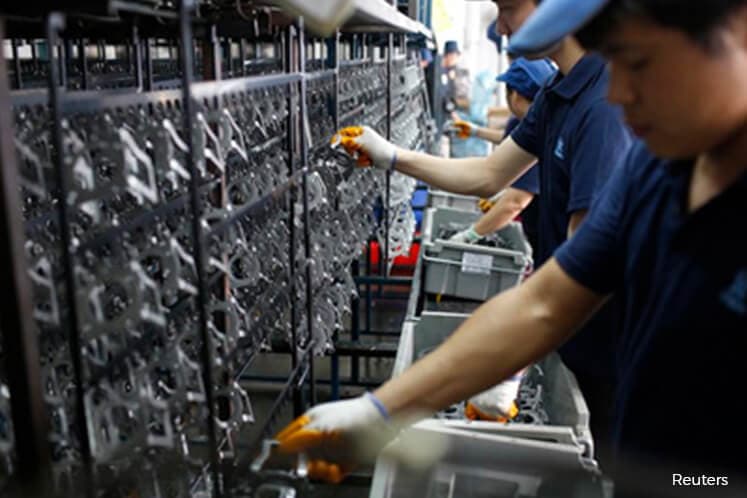
KUALA LUMPUR (July 4): The headline Nikkei Malaysia Manufacturing Purchasing Managers’ Index (PMI) is expected to face further downward pressure going forward, AmInvestment Bank Bhd Research (AmBank Research) said.
However, the downside could be limited as optimism in the business environment prevails amid easing cost pressures and higher exports, AmBank Group chief economist Anthony Dass said in an economic update today.
June’s headline PMI posted the worst decline since the data was compiled in 2012 — to 46.9 from 48.7 in May — as production and new orders took a sharp slowdown, implying business conditions have worsened in 2Q17, the research house said.
The latest data was no surprise, Dass added, saying he foresees overall business sentiment to bottom-out in 2H17.
“With the drop in production and new orders in May, it should have some knock-on effects in the month of June’s headline PMI.
“Furthermore, the loans approved in May fell 2.3% year-on-year (y-o-y) due to poor approvals in key areas like purchase of consumer durables (-88.9% y-o-y), construction (-21.8% y-o-y) and working capital (-36.8% y-o-y),” Dass said.
He expects the index to “experience headwinds going forward”, as production and new orders declined month-on-month in June, added with stagnant employment and lower purchasing activity and input stocks.
“However, the downside to the potential PMI headline data could be limited, underpinned by optimism in the business environment,” Dass added.
This is on the back of June’s cost pressures, which stood at the weakest in eight months.
He said the prospect on exports is also looking better, thanks to stablising commodity prices and moderate improvement in the global market, as well as the second uptick in new orders for exports in three months.
Dass maintained his 5% GDP growth forecast for this year, with base overnight policy rate (OPR) at 3%.
“However, we have raised the probability for BNM raising the OPR by 25 basis points in 2H17 to a 45% chance, from the previously 30%, following the stronger-than-expected economic growth in 2017, after the 5.6% GDP.
“We foresee the Malaysian ringgit to hover around 4.31 — 4.35 against the U.S. dollar on a full-year average, with our intraday trade likely to be around 4.12 — 4.15 on the strong end,” he added.